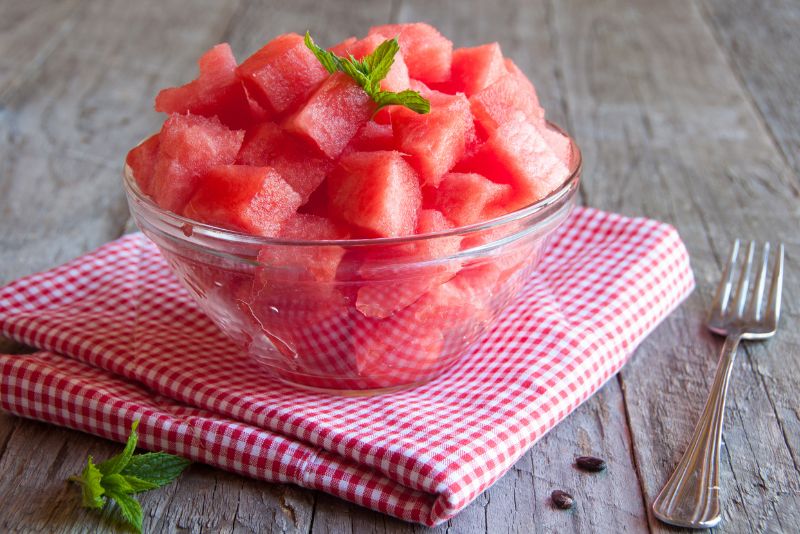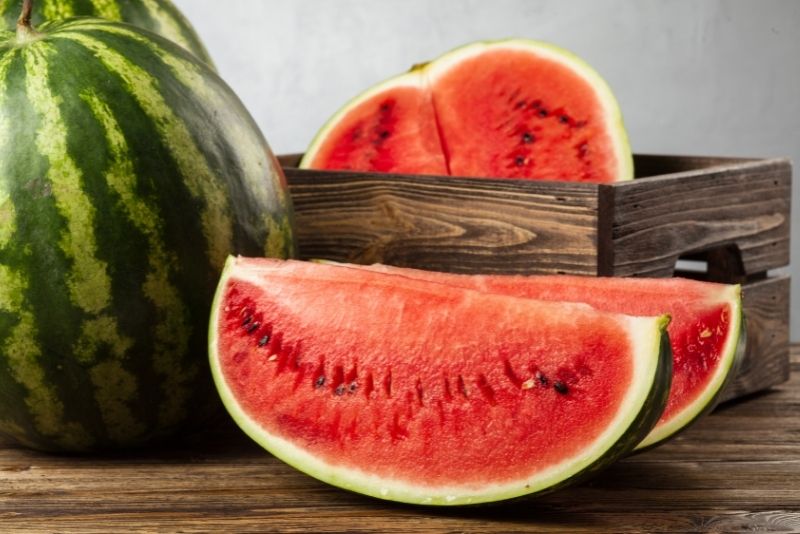I’m sure most of us have had the experience of picking up some fruit or vegetables from the grocery store only to find out later that they were no longer edible.
This can be very frustrating, especially when it comes to *almost* everyone’s favorite fruit in the summer – watermelons.
As watermelons are one of the more difficult fruits/vegetables to judge if they are good or not, I’m sure many people have fallen ill after eating bad ones.
So, how to tell if watermelon is bad? To help you, I have gathered seven simple ways that should help you determine if a watermelon is good to eat or not.
Table of Contents
How to Tell if Watermelon Is Bad?
To know if the watermelon is bad check the appearance of the watermelon. If the watermelon has any discoloration on the shell or if it looks moldy, then it is bad and should be thrown out.
Another way to tell if a watermelon is bad is by smell. If the watermelon smells sour or fermented then it is bad and should not be eaten.
Finally, give the watermelon a little squeeze. If it feels mushy then it is bad and should be thrown away.
1. Smell
One of the easiest ways to tell if a watermelon is bad is by smelling it. If the watermelon has a sour, unpleasant smell, it’s best not to risk eating it.
This may be a sign that it has gone bad. However, if the watermelon smells sweet and fruity, it’s probably perfectly fine.
2. Check for Areas of Brown or Green
Another way to tell if a watermelon is bad is by looking at its outer shell. If there are any brown or green patches on the skin, this may indicate that it has gone bad.
If so, it should be discarded immediately.
3. Feel Dryness
One last way to tell if a watermelon is bad is by touching it. If the watermelon feels very dry, this may indicate that it has gone bad.
If there’s dryness available, you should not eat it. However, if it feels a little bit moist and soft, it should be perfectly fine to eat.
4. Look for Soft Spots
Another good way to tell if a watermelon is bad is by pressing the outside of it with your thumb.
If you feel soft spots on the exterior, this might indicate that it’s not as fresh as it should be and has probably gone bad or potentially even moldy.
This method isn’t foolproof though, as not all bad watermelons will have soft spots.
5. The Crack Test
This method will help you determine if a watermelon is good to eat by testing its firmness.
If the watermelon has a yellow color underneath and feels soft, this may be a sign that it has gone bad.
Alternatively, if the watermelon feels firm and there is no yellow color underneath, this indicates that it’s still fresh and should be fine to eat.
The crack test may not work with every type of watermelon though.
6. Appearance
One last way to tell if a watermelon is bad is simply by looking at it.
If the watermelon has black stripes, green patches, or dry-looking withers, this indicates that it may not taste as good anymore and should be disposed of immediately.
Alternatively, if the fruit looks bright and vibrant with a sweet smell coming off of it (stronger for honeydew), it should be perfectly fine to eat.
7. Expiration Date
Pre-cut watermelon comes with an expiration date, so if you’re buying it, make sure to pay attention to that date.
However, if the watermelon is whole, you won’t know when it expires.
Hopefully, these seven tips will help you determine if a watermelon is good to eat or not. Make sure to keep these in mind when you’re going out shopping next time.
How To Store Watermelon for Freshness

If you want to keep your watermelon fresh for longer, the best way is to store it in a cool, dry place out of direct sunlight. To keep it fresh for 3-4 days, you can place the whole watermelon in a cool fruit basket.
If you need to store the watermelon for longer than that, cut it into smaller pieces and put them in an airtight container, and store them in the refrigerator. This way, they won’t dry out as quickly.
If you want to freeze your watermelon, cut it into small pieces, put them in an airtight container, and store the container in the freezer.
Do NOT put the whole watermelon in the fridge as this will lower its overall quality and cause it to rot more quickly.
Only remove the amount of watermelon you need before eating it. Refreezing watermelon can cause it to become soggy and lose its overall quality.
Frequently Asked Questions
How to tell when cut watermelon is bad?
Discoloration, mold, and off smells are all indicative that cut watermelon has gone bad and should not be eaten. The flesh of the watermelon should also be firm, not mushy.
Cut watermelon will start to spoil faster than whole watermelons, so it is important to pay attention to the signs of spoilage.
Is soft watermelon bad?
Watermelon can be soft or overripe without being bad. An overripe watermelon will be soft to the touch, but will still be safe to eat.
The flavor of an overripe watermelon may not be as good as a ripe one, but it won’t make you sick. If a watermelon is bad, it will be mushy all the way through and will have an off smell.
Can you eat watermelon seeds?
Watermelon seeds are perfectly safe to eat, but some people may not like the crunchy texture.
The best way to remove watermelon seeds is to scoop them out with a spoon or your fingers. If you don’t want to eat the seeds, you can also spit them out.
Conclusion
In conclusion, these are simple ways you can tell if a watermelon is good or bad.
These tips should make it easier for you to tell the difference between good and spoiled produce at your grocery store or farmer’s market.
